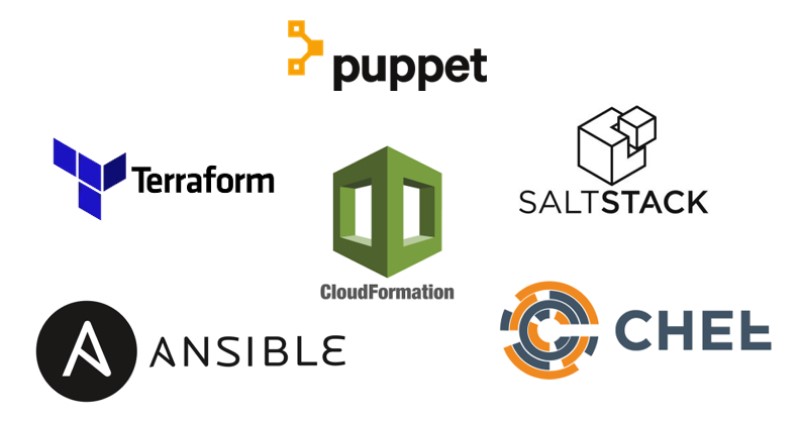Do you want to manage your servers and systems with the latest and greatest tools? If you answered yes to this question, then you are in luck, because there are some great cloud-based configuration management tools available that make managing your servers and systems easy. But first, acameramen wants you to learn a little bit about cloud based configuration management.
What is cloud-based configuration management?
Cloud-based configuration management refers to the practice of managing the configuration of IT systems and infrastructure that are hosted in a cloud environment. Configuration management is an IT management process that involves tracking and managing individual configuration items of an IT system, such as software, servers, and clusters of servers.
Cloud-based configuration management can be implemented using various tools and solutions offered by cloud providers, such as Microsoft’s Configuration Manager or the approach taken by the cloud.gov team. It enables IT teams to manage their IT infrastructure more efficiently by providing centralized control and automation capabilities.
By using a cloud-based solution for configuration management, IT teams can avoid the need to manually configure each individual system, which can be time-consuming and error-prone. Instead, they can manage all their systems and applications from a single location, making it easier to implement changes, monitor performance, and ensure compliance with security policies and industry standards.
The benefits and challenges of using cloud-based configuration management
Cloud-based configuration management offers several benefits, but it also comes with its own set of challenges. Some of the benefits and challenges of using cloud-based configuration management are discussed below.
Benefits:
- Centralized management: A centralized cloud configuration platform can simplify access to controls, certificate expirations, and password management, making it easier to manage cloud infrastructure and minimize security breaches.
- Improved uptime: Cloud configuration management solutions allow individuals to address configuration issues as they arise, reducing downtime.
- Streamlined deployments: Cloud platforms allow teams to specify hardware resources and network connections through machine-readable data files like YAML, simplifying the deployment process.
- Monitoring and optimization: Cloud configuration management tools can gather essential cloud configuration information and monitor cloud configuration parameters, enabling organizations to optimize their cloud infrastructure.

Challenges:
- Complexity: Cloud-based systems can be complex, and managing them through configuration management tools can be challenging.
- Security risks: Cloud-based configuration management can also pose security risks if not managed properly, as sensitive information and access controls are stored in the cloud.
- Cost: Cloud configuration management tools can be costly to implement and maintain, particularly for small organizations with limited budgets.
Overall, while cloud-based configuration management can bring significant benefits, organizations must carefully consider the potential challenges and risks associated with cloud-based systems and infrastructure before implementing a cloud configuration management solution. Adequate planning, careful implementation, and ongoing monitoring can help organizations overcome these challenges and achieve the benefits of cloud-based configuration management.
What are the different types of cloud-based configuration management tools?
There are different types of cloud-based configuration management tools available, and they can be broadly classified into two categories: agent-based and agentless.
- Agent-based configuration management tools: These tools require an agent or a client to be installed on each node or server that needs to be managed. The agent is responsible for communicating with the central configuration management server and executing the configuration tasks. Examples of agent-based tools include Chef and Puppet.
- Agentless configuration management tools: These tools do not require an agent or client to be installed on each node or server. Instead, they use SSH or WinRM to remotely execute commands and scripts on the target systems. Examples of agentless tools include Ansible and SaltStack.
Another way to classify cloud-based configuration management tools is based on their purpose. Some tools are designed for configuration management only, while others provide additional features such as orchestration, monitoring, and security.
- Configuration management tools: These tools are designed specifically for managing configurations across multiple systems. Examples include Chef, Puppet, and Ansible.
- Orchestration tools: These tools provide a way to manage the lifecycle of applications and services, including deployment, scaling, and monitoring. Examples include Kubernetes and Terraform.
- Monitoring and management tools: These tools provide visibility into the performance and health of systems and applications. Examples include Nagios, Zabbix, and Prometheus.
- Security and compliance tools: These tools help to ensure that systems are secure and compliant with industry standards and regulations. Examples include OpenSCAP and Chef Compliance.

What are the best cloud-based configuration management tools?
market, and choosing the best one depends on your specific needs and requirements. Popular choices to think about are listed below:
- Ansible: It is an open-source configuration management tool that uses YAML-based playbooks to automate configuration management tasks. It is simple to use and is known for its agentless architecture.
- Chef: It is another popular open-source tool that provides a simple and flexible way to manage infrastructure configurations. It uses a Ruby-based domain-specific language (DSL) to describe system configurations.
- Puppet: It is a declarative, model-driven configuration management tool that uses a Puppet-specific language to define system configurations. It supports a wide range of operating systems and cloud platforms.
- SaltStack: It is a Python-based, event-driven automation tool that uses YAML and Jinja2 templates to configure systems. It supports both agent-based and agentless architectures.
- Terraform: It is a popular infrastructure as code tool that can be used to manage cloud infrastructure and other resources across multiple cloud platforms. It uses a declarative language to define infrastructure configurations and can be used to provision, manage, and deploy infrastructure resources.
- CloudFormation: It is an Amazon Web Services (AWS) service that can be used to create and manage AWS resources using templates. It provides a simple and flexible way to manage AWS infrastructure configurations.
These are just a few examples, and there are many other cloud-based configuration management tools available. The choice depends on your specific requirements, such as the cloud platform you are using, the level of automation you require, the complexity of your system configurations, and so on.
Wrapping It Up
The Coolest Cloud-Based Configuration Management Tools are the most efficient and user-friendly tools that are available on the market. They allow for users to keep track of all their configuration and change requests in one centralized location, making it easy to manage and update. Additionally, these tools have a wide range of features that make them perfect for larger organizations.